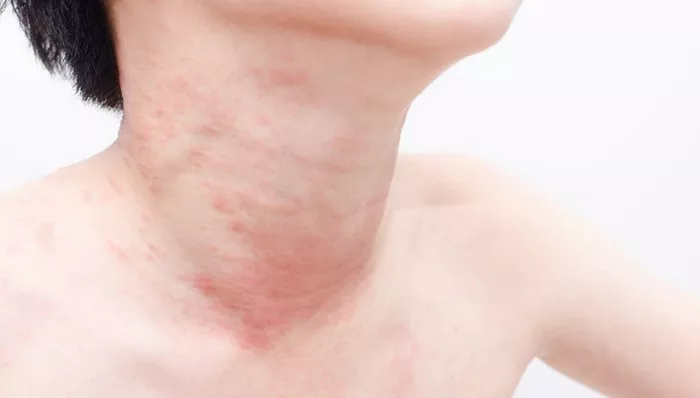In today’s fast-paced world, stress has become an omnipresent aspect of daily life for many individuals. From work deadlines to personal responsibilities, the pressures of modern living can often feel overwhelming. Alongside the mental and emotional toll, stress can also manifest physically, with symptoms ranging from headaches to gastrointestinal issues. Among these physical manifestations, hives and rashes stand out as common yet perplexing reactions. The intricate relationship between stress and these skin conditions has intrigued researchers and healthcare professionals for decades. In this article, we delve into the mechanisms linking stress to hives and rashes, exploring the physiological underpinnings and practical implications for managing these conditions.
Understanding Hives and Rashes:
Before delving into the connection with stress, it’s crucial to grasp the nature of hives and rashes. Hives, medically termed urticaria, are characterized by raised, itchy welts on the skin. They can vary in size and shape and often appear suddenly, disappearing within hours or days. Rashes, on the other hand, encompass a broader spectrum of skin abnormalities, ranging from redness and inflammation to blistering and scaling. While hives are typically a response to allergens or irritants, rashes can stem from various factors, including infections, allergies, and autoimmune disorders.
The Stress Response and the Skin:
The human body’s response to stress is orchestrated by the intricate interplay of hormonal and neurological pathways, collectively known as the stress response system. When faced with a perceived threat or challenge, the brain triggers the release of stress hormones, such as cortisol and adrenaline, initiating a cascade of physiological changes to prepare the body for action. While this response is crucial for survival in acute situations, chronic or excessive stress can dysregulate these pathways, leading to a myriad of health issues, including skin manifestations.
The Role of Stress in Hives and Rashes:
While the exact mechanisms linking stress to hives and rashes are still being elucidated, several pathways have been proposed. One prominent hypothesis revolves around the immune system’s response to stress. Chronic stress can impair immune function, weakening the body’s defenses against allergens and pathogens. This compromised immune surveillance may predispose individuals to develop hives or exacerbate existing skin conditions.
Furthermore, stress-induced alterations in skin barrier function have been implicated in the pathogenesis of rashes. The skin serves as a vital barrier, protecting the body against external threats and maintaining homeostasis. However, prolonged stress can disrupt this barrier integrity, compromising its ability to retain moisture and repel irritants. Consequently, the skin becomes more susceptible to inflammation and hypersensitivity reactions, culminating in the development of rashes.
Psychological Factors and Skin Health:
Beyond its physiological effects, stress can also exert a profound influence on psychological well-being, which, in turn, impacts skin health. Anxiety, depression, and other mood disorders commonly coexist with chronic stress and have been associated with an increased risk of dermatological conditions. Moreover, the psychological burden of living with visible skin manifestations can exacerbate stress levels, creating a vicious cycle of exacerbation and symptom persistence.
Managing Stress-Induced Hives and Rashes:
Given the intricate interplay between stress and skin health, managing stress effectively is paramount in mitigating hives and rashes. While eliminating stressors entirely may not be feasible, adopting healthy coping mechanisms can help alleviate its impact. Mindfulness-based practices, such as meditation and deep breathing exercises, have shown promise in reducing stress levels and improving skin outcomes. Additionally, engaging in regular physical activity, maintaining a balanced diet, and prioritizing adequate sleep can bolster resilience against stress-induced skin conditions.
In cases where stress-related hives or rashes persist despite lifestyle modifications, pharmacological interventions may be warranted. Antihistamines, corticosteroids, and other medications can help alleviate symptoms and prevent flare-ups by targeting the underlying inflammatory processes. However, it’s essential to consult a healthcare professional before initiating any treatment regimen, as individualized approaches are necessary to address the unique needs of each patient.
Conclusion
In conclusion, the relationship between stress and hives/rashes is multifaceted, encompassing a complex interplay of physiological, psychological, and immunological factors. While stress can exacerbate existing skin conditions or precipitate the onset of new ones, adopting healthy coping strategies and seeking appropriate medical care can help mitigate its impact. By understanding the intricate mechanisms linking stress to skin health, healthcare professionals can offer comprehensive management strategies tailored to each individual’s needs, ultimately improving quality of life and well-being.

























